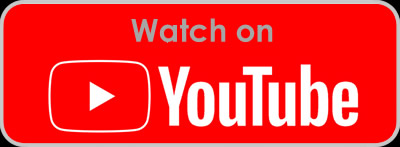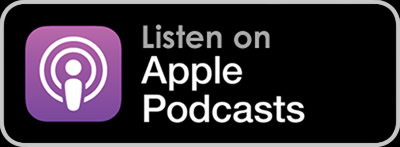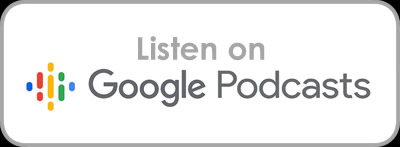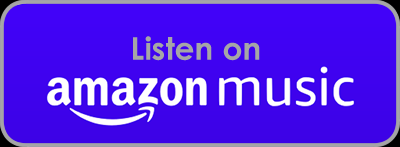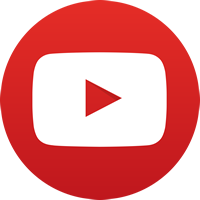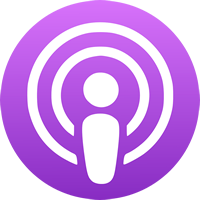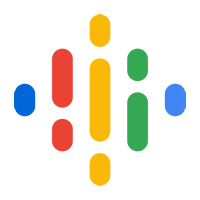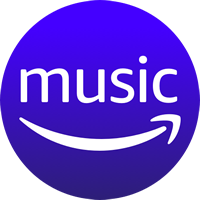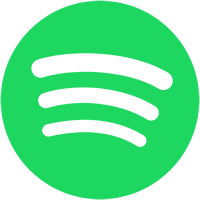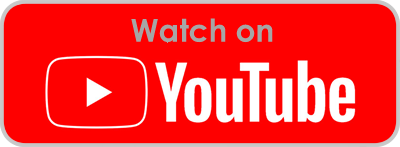Have you written off traditional media?
Perhaps you’ve been focusing in on online traffic, not really considering that offline could be just as valuable.
Joining me to discuss that on episode 263 of Digital Marketing Radio is a man who taught Advanced Digital Marketing, Innovation Management, and Strategic Economics at Harvard University.
He’s the former Head of Growth at HubSpot Labs and the current CEO & Co-Founder of OneScreen – a pandemic-produced startup set on overhauling the archaic out-of-home advertising industry. Welcome to DMR – Sam Mallikarjunan.
Key questions covered in this episode:
Is it a mistake for a digital marketer to specialise on just one channel?
Should all digital marketers also be aware of more traditional, offline opportunities?
What does this mean in practice?
Where does offline fit into the marketing mix?
What offline strategies are working best at the moment?
How do the costs compare?
How measurable is offline media?
Are there any benefits to just focusing on offline, or is a mix between online and offline always best?
Audio recording:
Full transcript:
David Bain
Digital Marketing Radio Episode 263: Why traditional and digital media marketing opportunities are converging, and how to take advantage!
Bot
Digital Marketing Radio with David Bain.
David Bain
Hi, I’m David Bain. And this is Digital Marketing Radio the show for in-house agency and entrepreneurial marketers who want to stay on top of the latest tools, tactics and trends, as shared on DMR by today’s modern marketing masters have you written off traditional media? Perhaps you’ve been focusing in on online traffic and not really considering that offline could be just as valuable? Joining me to discuss that on episode 263 of Digital Marketing Radio was a man who taught advanced digital marketing innovation management and strategic economics at Harvard University. He’s the former head of growth at HubSpot labs, and the current CEO and co founder of one screen epidemic produced startup set on overhauling the archaic out of home advertising industry. Welcome to DMR Sam Mallikarjunan.
Sam Mallikarjunan
Thanks for having me. I’m looking forward to it. Yeah. Hi,
David Bain
Sam. Great to have you on here. As you can find Sam over at one screen.ai. So Sam, is it a mistake for a digital marketer to specialise on just the one channel nowadays?
Sam Mallikarjunan
It is. And it was a mistake that I made for a long time, like I wish I had known about out of home when I was at HubSpot, I would have wrapped a bunch of ice cream trucks and just driven them around sales forces conference instead of all the weird like, Twitter stuff I had to do. It’s It’s ironic, because, you know, I remember, when I was director of marketing for universal Florida, it wouldn’t let me buy Facebook ads, because it wasn’t an approved marketing expense. Like you know, we do real marketing here. But they would let me buy like bus ads. Now it’s all slipped, right? It’s like, people can buy Facebook ads all day long. But they they don’t think even think or actually have the ability or permission or authority to do things like like out of home. But especially as digital internet outcome, internet channels have become ridiculously competitive, right? as well, as you know, the trend towards privacy taking away a lot of the functionality that made Facebook, Google etc, really powerful. We all need one, we’re all tired of internet advertising. Like I don’t want to do another AV test on a Facebook ad. But two, we need a new channel for growth and acquisition. And there’s a lot of a lot of leverage and a lot of opportunity and the things that we’ve blown off for the last 15 years. I remember
David Bain
2008 or so working as in-house as an in house marketer. And what you’re saying is absolutely spot on. Remember, it was so easy to spend 10,000 pounds on a magazine, but to get permission to spend 50 pounds and some online trial was was so challenging, and so many hoops had to be jumped through to do that. Do you think all digital marketers should be aware of more traditional offline opportunities? Should every marketer be doing this? Or is it just a case of a few doing this, and it’s quite right for a few just to focus on digital.
Sam Mallikarjunan
So everyone should be aware of it. I think something happened to the brains of marketers over the last 10 years, where we went from trying to like figure out new things and have new channels to we’re just trying to, like optimise the things that we know and trust and understand that our easy. Part of that is the just the pressure from like the CFO and CEO, we went from being marketers went from being seen as the team that sits in the corner playing with crowns, to having to draw like a direct line from every dollar out to like $1 revenue back in. And that’s really easy to do through through some of those channels. But it’s something everybody should be aware of, because we need we should always as marketers be exploring new mediums, new acquisition channels. It gives us a competitive edge, you know, if you figure it out for your competitors, in terms of who is appropriate for any given medium for out of home, at least we have not yet found any brand where it’s completely inappropriate. There are people who it’s better for like B2B account based marketers, you know, or B2C is a lot of what people think about but we haven’t yet found anybody where it’s like there’s nothing you can do and out of home, because it’s it’s something that your competitors I almost guarantee you are not doing.
David Bain
So what are the reasons? Why do you think that people aren’t trying out of home offline type marketing opportunities nowadays? Is it cast is it perception that it takes a long time to create Actually action, some kind of campaign or other reasons.
Sam Mallikarjunan
I think there’s a little bit of both in there. One is we just don’t think about it. Like I prior to this, I bought billboards twice in my career and once was just to piss off a competitor. We, we don’t think about offline media we were, it’s also there’s a lack of education. It’s a tough, it’s a terrible name for category, because it defines itself by what it isn’t. So right, so it has billboards in mass transit. But it also has like ads and bars and restaurants, it has the right rap ice cream trucks. You know, I live in Florida right now. So there’s a plane flying over trailing a message behind it. Like, it’s so it’s so big and hard to ingest, and understand that, you know, there’s just like a cognitive load there. And people don’t know, like, what’s possible. And then the other thing is, it is has historically been very, very hard. Part of that’s because, you know, it’s very fragmented. So Florida’s got 16,000 billboards on by 813 different companies. So if I gave you exactly as good analytics, as you have on Facebook and Google, but it takes you six weeks of calling 40 different companies to launch campaign, you’re still not going to do it. And the other part is, you know, marketers have to get comfortable with a little bit more uncertainty. In terms of the analytics, again, like the pendulum swung way too far. We went from measuring nothing to having to measure absolutely everything. And we like to click, there’s a middle ground there where you can combine the the art with the data science. So it’s, it’s actually I think there’s a misconception about the cost on a CPM basis. It’s one of the cheapest, it’s far cheaper than internet advertising. And in terms of how much budget you have to spend, or how much something individually costs, I mean, as long as you’re not doing Time Square in New York City, it’s 50% of the inventory goes unsold every month, so it’s surprisingly cost effective.
David Bain
Wow. So I’m just thinking about giving someone the opportunity to perhaps test out of home advertising, how much time does it take between Inception and actually getting a campaign up and running? And what’s a reasonable initial budget to test something out?
Sam Mallikarjunan
Yeah, we generally push people towards doing smaller campaigns in the beginning, unless you’ve done out of home before, so you have a baseline of data. You know, so we’ll have people like pick one city, one area, one target audience, and then, you know, see the data that comes through measure, did somebody drive past your billboard? Did they then go visit your website? Or did they then go to like a location that you’re trying to drive them to, etc, using that that third party mobile app data that we’ve used on mobile advertising for five years, but has never been pointed at out of home? So we get we tell people to start small, usually, it’s something like 50, between 10 and $50,000, of budget, and you want to run it for like four weeks or so. So that you get statistical significance. We get these people coming to us. And they’re like, you know, they want to do these, like $2 million campaigns. But if you don’t have a baseline of data, you don’t have an intelligent way of planning it. So not only should you, you know, can you start with, with a much smaller budget really should unless you know what you’re doing.
David Bain
And what kind of initial call to action is worthwhile considering are we only talking about brand and brand uplift, or other much more intelligent ways to measure the success of this.
Sam Mallikarjunan
But there’s much more intelligent ways you can definitely manage and measure brand uplift, but that we’ve been able to do for a long time, being able to track things like app downloads, website visitation, or, you know, did it do target’s ads lead to an increase in people actually going to target that were exposed to it. There’s good analytics out there, in terms of, you know, being able to track those conversions. And like betmgm is our biggest customer. And there’s, it’s they’re solving for like a cost per account creation, right. So you can absolutely solve for brand awareness, but it is it can also be an acquisition channel, you can drive leads, you can drive e commerce sales, you can drive retail sales, and then you can measure that on an ongoing basis and improve your campaign over time. See, which billboards actually do work. And then you know, double down on those learnings
David Bain
and what stage in the customer buying journey does out of home actually fit best? Are we talking about general awareness to begin with? Or is it possible to do some form of remarketing to people that have already heard of you in some way?
Sam Mallikarjunan
So another common misconception is that out of home is mostly for big brands like McDonald’s or Pepsi. But there’s really good data on this from Northeastern University out of home favours what we call challenger brands. So startups, for example, we’re really popular with startups. Because your biggest challenge is nobody knows who you are. Right? So being able to create that reach, create awareness, drive an increase in Google search volume, and then you can have your Google AdWords be more effective. The understanding who your target customer is if your account based marketing, right, like we can park an LED truck across the street, from the the office you’re trying to sell to, with a photo of the sales rep saying like, Hi, I’m Jim, I’m going to call you next week. You know, there’s this, you can do that. But once if you can define who you want to reach, and what’s the outcome you want to drive, you can use it throughout the entire funnel. It can be used to definitely drive like brand awareness. It can be used for direct response acquisition. And they can also work in synergy together. So like retargeting people on Facebook, after they saw your Facebook ad has a ridiculous increase in the the yield that you get from your Facebook ads, because nobody’s impressed that you can buy Facebook ads is there’s a trust issue there. But if somebody sees you on a billboard, because historically, it’s been really hard and people think smell expensive, etc. It creates a lot of trust so that it can also work with the other channels further down the funnel.
David Bain
Okay, okay, so, um, obviously, there are lots of different advertising techniques and channels as part of out of home, you’ve got your ice cream truck wraps that you talked about earlier on, but also you mentioned digital as well as part of the mix. So how good an instant is the analytics for the digital part of this? So if you have a digital billboard, for example, is it possible to see analytics of how many people have passed by the digital poster, if you can call it that, how many people have perhaps scanned a QR code and what kind of analytics is available
Sam Mallikarjunan
QR codes you can get. But from an analytics perspective, the the universal, like adoption of mobile devices has been really good for, for offline media. Because you can count the number of cell phones, for example, that are going past a given billboard, you can buy that third party data from I think we have 48 different data partners that we’re getting data from. And then there’s so you can get really good, pretty granular data in terms of website visitation. And in you know, any one of those metrics, I will it’s not 100%. But I told the team all the time, you don’t have to outrun your bear, you just have to outrun your buddy, right? Like you need enough information that you can optimise the campaigns over time, see if that feedback loop of knowledge and then you can improve the campaigns. But again, the the dirty secret of out of home is that it is actually even if you can only measure 10% of the revenue lifts like for betmgm, we probably only actually detected 10% of the value that they got is still an ROI positive channel because it’s it’s relatively inexpensive to deploy.
David Bain
You mentioned MGM a couple of times, are you able to share any specific examples of specific campaigns of brands, perhaps, of brands using your own service or other brands that you’ve seen out there? integrating out of home into their overall marketing mix, integrating really effectively with digital? What style of campaign it was and how it actually integrated with digital?
Sam Mallikarjunan
Yeah, my favourite story is a company called segment, they worked with one of our supply side partners, rapa phi, which does rap cars, on account based marketing selling to that to specific businesses. And they they ended up they stopped spending money with Shopify because they had converted all of their accounts. It’s the like, it’s the most satisfying and simultaneously frustrating reason to that you could ever have to lose a customer. It is part of what makes out of home a challenge though. It’s just it’s overwhelming. Like the internet is small. It’s confined to you know, a flat surface with just these two screens, either a mobile device or desktop or a laptop. It’s a very sort of controlled environment for marketers, we understand it out of home, people, people don’t know what’s possible. And that’s the problem we’re trying to solve right is you should be able to say, here’s the audience I’m trying to reach, here’s the outcome I want to drive. And then we should be able to say here are the things that are relevant to that. The I mean, I love MGM is an example because they were literally solving for cost per account creation. And that’s, you know, the brand marketers need to get better about using data and performance marketers need to get more comfortable with, you know, not less precise data. Yeah. Not not using data, but like, yeah, like people, like people like me ruin to the profession of marketing. Right, we spent so much time telling everybody that they have to measure everything. And marketing is a social science, right? It’s economics, it’s a social science. It’s not, this isn’t physics. And so we’ve got to get a lot more comfortable with the fact that we’re not gonna be able to measure everything perfectly. But, you know, I told you earlier, this is the most fun I personally have had doing. Marketing, since they invented paid social ads. It’s just there’s huge breadth of things that can be overwhelming for marketers. So the analytics are quite good. The biggest issue is the friction and fragmentation. So there’s just there’s, well, until we’re done building it, there’s never been a way to like buy from 40 different media owners all in one click. And then there’s never been that sort of feedback loop of data to say, you know, for MGM in one of the cities we ran, billboards did really great for them. In another city, Salt Lake, police based ads inside sports bars, actually outperformed the billboards. And, you know, it’s an interesting insight by itself. But what’s most interesting is that we know that that insight exists, and that you can be the best at getting better.
David Bain
Just thinking about how a marketer would combine the data, I guess you could potentially provide them with more More, more digital data, something like Google Analytics, or maybe Google Data Studio to actually see the value of one against the other if someone was actually wanting to compare Facebook advertising against some form of out of home advertising, would something like Google Data Studio be a good way of doing this?
Sam Mallikarjunan
You could if you wanted to look at just like lifted traffic, or something like that. But I would suggest working with a company like for example, our favourite data partners, a Creative Media and get a pixel set up on your website. So you’re getting that conversion data. And then you can want like, do a Facebook in one city and out of home, and then do Facebook in another city, but not out of home. Or you can actually do a holdout test, where you measure the effectiveness of your Facebook ads for people who work suppose to the billboards or whatever you’re doing. And then the effectiveness for people who aren’t, like we saw a 50% decrease in cost per click by retargeting people after they drove past our Billboard. But we were able to compare that Facebook ads campaign to people who weren’t exposed,
David Bain
is it worthwhile having a specific URL on a billboard, to measure call to action for that particular medium, giving a special offer and asking people to go to your domain.com? slash billboard, or? or whatever? Or will most people end up just going to your homepage is not so measurable like that?
Sam Mallikarjunan
Yes, I mean, out of Home media is, again, especially depending on what you’re doing, if you’re doing billboards, you’ve got a little bit of their attention for a few seconds. If you’re doing ads in the backs of Ubers, you have kind of a captive audience, you have their undivided attention for the 2030 minute Uber ride. So not all mediums are created equal in terms of what they’re useful for, or what they’re what they’re good for. And that’s, that’s again, part of the challenge is helping people understand, like what medium is appropriate for which type of marketing activity or marketing campaign
David Bain
is ever going to be the case for some sectors that it’s worthwhile just focusing on out of home? Or is it likely that a mix is always going to be best between offline and digital?
Sam Mallikarjunan
I mean, I think a mix is always going to be best the the issue with the internet channels, because there’s there’s digital out of home, which is, you know, technically digital, so I call them online and offline. You know, for for online advertising. We’ve gotten really good at it. Right. So like, do your AdWords do your Facebook, but understand that it is a strategic risk to your business to be really dependent on one channel. One, there could be like big changes to you know, like, the privacy regulations that make them less effective. But to your competitors are probably also really good at it. Like, you know, marketing, just think about SEO right? In 2006. I got a website, a cigar website to rank for the term health insurance just because I was bored. Like marketing used to be kind of easy. Now, like every company has SEO, they have PVC like that competition has, has made it so that those are Kind of table stakes. It’s not it’s not a differentiator, it’s it’s something you have to do. The offline media is the opportunity to be ahead of your, your competition your customers. Can you do just offline? Absolutely. Again, depending on who you are, if you’re an account based marketer, I’m telling you like, right, the ice cream truck pocket pocket across from the their office, right. Or if you had, if you’re trying to get somebody to physically go somewhere out of home advertising is better at that than then online advertising. Because offline, advertising his context. So my favourite story, we’ve got an advertiser who’s a liquor store in Boston, and there are 3% of people who go to the liquor store, and they go to work. So we’re, their mobile device spends eight hours a day, super interested to find out who those people are. But in general, right, like, out of home, lets you say, Don’t show ads to people when they’re on their way to work. You know, Facebook and Google don’t have that kind of, you know, granularity. So the context of what’s going on around you matters. And we know that intuitively, but the internet doesn’t generally let you control for that.
David Bain
Wrap the ice cream, truck and park outside the work. I love that, as always. It’s just a it used to be probably more common sense thinking and marketing. But it’s so out of the box thinking when it compares with what so many digital marketers are doing nowadays. It’s incredible. Something let’s segue to part two of our discussion. That’s no time for your thoughts on the state of digital marketing today. So moving on to SECRET SOFTWARE. So Sam Sherif, lesser-known martech tool that’s bringing you a lot of value at the moment and why that tools important for you.
Sam Mallikarjunan
So I won’t say HubSpot, because that’s the obvious answer. I worked there for eight years, and I have a free subscription. So that’s that’s kind of cheating. If you haven’t checked out HubSpot, though, you should it is ridiculously powerful. it’s it’s it’s really easy to use, it powers the majority of our Mar tech stack. From an ad tech perspective, specifically as a subset of Bartek. There’s some really interesting things. For example, ke li.io, which just rebranded to reclaim, which literally pays people to share their data, instead of like stealing it, right, you can put the app on your phone, and they’ll send you money for you know, sharing your location data and connecting your credit card or whatever. And you get ridiculously good depth of data on your existing customers or on competing competitor customers, etc. Because it turns out that when you pay people for their data, instead of stealing it, you get much more accurate data and much more of it that you can use. So if you haven’t checked if you’re especially if you’re doing any digital advertising, either online or offline, I would definitely check out the folks that
David Bain
keeley.io How do you spell Kelly dial?
Sam Mallikarjunan
k i l li.io. They just rebranded to reclaim with K instead of C. But yeah, if you google anything close to it, you’ll you’ll find that there’s Yeah,
David Bain
broken in the domains actually reclaim yours.com. And the key is, instead of the reclaim, of course as you saying it’s it’s it’s perhaps a bit challenging to see an audio form or video forum, but I’ll make sure the link to that is in the show notes at Digital Marketing radio.com. But let’s move on from something that you currently use to something that you’re going to use. So that NEXT ON THE LIST. So what’s one marketing activity or tool that you haven’t tried yet, but you want to test soon?
Sam Mallikarjunan
I really wants to try more of the account based marketing tools. There’s good stuff out there, you know, like Terminus and some of these other ones. One, it’s a perfect fit for us, right, because we’re marketers, marketing to marketers about marketing. Right? To, we’re way more popular with account based marketers, as you and I have talked about, then we had expected, and I think like account based marketing platforms used in sit in synergy with the offline marketing, I think you’re gonna be ridiculously powerful. Because if you if you want to sell the HubSpot, I can tell you the roads their employees take to go to and from work. And it’s not the major highways that you think I can tell you what bars and restaurants they go to where you can buy ads inside the bars and restaurants. And so if you can combine that with the, you know, metadata.io and in Terminus and some of these really cool ABM tools. That’s really really powerful. So anybody listening, if you have a favourite ABM tool, like send me a tweet, or something so I know what what to what to check out because that’s a it’s a big category and it’s one that I want I’ve never really done before and I want to learn more about it.
David Bain
Is this type of targeting going to be available for out of home advertising in the future? I’m thinking You mentioned HubSpot, and you know, the roads to HubSpot for employees. What about you know, other companies that you want to target are employees of certain companies? Obviously, it’s fairly easy to know where the offices it should be fairly easy to know which routes employees take to go there. Is it possible no? Or will it be possible in the near future to just target out of home advertising along those those routes, for example?
Sam Mallikarjunan
Yeah, give me give me an address or a pair of lat lat long coordinates and the so you’re a proper SEO nerd. Like me, I’ll explain kind of how our platform works. We ripped off Google’s PageRank concept. If you think of two spots on a map, like two websites, at a mobile device observed at each as an inbound link. If you want to sell to people who work at hospitals in Pittsburgh, there’s 54 billboards, 18 of them have the most inbound links to people who also work inside the hospitals, and nine of them if you want if you want to reach doctors and administrators, nine of them also over index people who live in like high income neighbourhoods. So it’s that’s how we look at my co founder say that when I use things like geospatial intelligence, but like the literal physical buyers journey, how somebody moves about their day, and any to any two points on a map, you can understand the relationship between that point on the map and any other point on a map. Oh, I’ve
David Bain
heard Gary Vaynerchuk saying things like billboard advertising is dead because people just stare at the screen in front of them nowadays. How many people actually look at billboards nowadays and act on what’s on them?
Sam Mallikarjunan
I think there’s an interesting phenomenon where COVID created and the lockdowns created an overdose of digital saturation, we’re actually tired of it. I know some ecommerce companies were who think of the reopenings as actually a strategic threat, because going to Petco is now an outing. You know, people want to get out of home, we’ve been staring at zoom screens and TV screens and our cell phones so much that the overexposure has actually made us more interested in in looking up it so I definitely there’s there’s no way that you can say that that kind of stuff is dead, that people are looking down at their screen all the time. People are definitely the real world is much bigger, right? Like the internet, the internet that you have to reach me is a 10th of a percent of the reality that I actually experienced on any given day. So and the there’s other things too, like the newer younger generations, they like out of home or offline advertising better, because they don’t want you to interrupt their tik tok or their Snapchat experience. You know, they that that isn’t compelling to them. But if you can, if you walk past a beautiful painted mural, and yes, you can do that through our marketplace as well. You know, that has a different impact on you. So it’s people staring down at their phones all day, is what Google and Facebook wants to have happen. It’s the internal mission of our team is actually like to save the real world is kind of what we talked about, like we want to make the real world useful by making it easy for brands to create compelling experiences, the way that we do online.
David Bain
That’s good answer, because I’m thinking about it. Obviously, over the last couple of years or so, people have been getting zoomed out. They’ve been having so many online meetings, they just want to get away from their computers. So if they’re travelling again, they’re probably less likely to be able to be looking at their little devices than then than they were before. And let’s move on to the next stage, which is this or that route? So this is a quick response round to 10 quick questions, Just 2 rules here. Try not to think about the answer too much. And you’re only allowed to see the word both on one occasion to use it wisely. Are you ready? Let’s do it. Tick Tock on Twitter, Twitter, Facebook or LinkedIn, LinkedIn, YouTube or podcast, podcasts, traffic or leads, leads, paid search or SEO, SEO, ads or influencers Google ads or Facebook ads,
Sam Mallikarjunan
Facebook ads,
David Bain
email marketing or chat marketing, email marketing, or tech stack or on one platform all in one platform one to one or scale scale. I was too easy. There’s normally one answer that I guess just struggles with a little bit but you were just so fluid and didn’t seem to be second guessing yourself at all. What was there anything that you really had to think about there?
Sam Mallikarjunan
Yeah, thanks. Book ads is another example of things that people just do poorly. They try and take the same bottom of the funnel creative and copy and call to action that they would have for anything else. And just like assume it’s going to work on paid social media, where there it’s there earlier in their buyers journey. The other thing is Facebook’s machine learning is ridiculously good. And it’s why I also said leads, I would actually not even say leads, I would say like opportunities. The further down the funnel, you can track the understand like what influence what brought that person and what influenced them to conversion, the better you can train like Facebook’s machine learning algorithm, or just your own analytics. So measure down funnel as much as possible. And understand the relationship between the medium you’re using to to reach an audience. And there’s where they are in their buyers journey.
David Bain
Great phones. Let’s move on to the $10,000 question. If I were to give you $10,000, and you had to spend it over the next few days in a single thing to grow your business, what would you spend it on? And how would you measure success
Sam Mallikarjunan
partially depends on my company, if I’m a B2B ABM company, again by the ice cream truck parked across in their office, but I would spend it on a company called blip billboards, they let you create like it’s basically an auction for billboards, you get a ridiculous amount of reach for a very low cost. So you do all of the cool offline things that billboards give you. But it’s a really easy to use interface, and you get just ridiculous bang for your buck. So I would do if I had to do just one activity, I would probably be spending money on blip billboards, because that’s going to make everything else work better. Anyways,
David Bain
perfect work. To finish off, let’s shift the focus to someone else who deserves it. So that is our MAGICAL MARKETER who’s an up and coming marketer that you’d like to give a shout out to what can we learn from them? And where can we find them.
Sam Mallikarjunan
There’s a woman named mK gettler, who was until recently, the head of marketing for Alice in Boston, easily one of the top five marketers I’ve ever hired, she she worked with me at a previous company. She is not only very talented and very organised and good at managing a marketing team. By the way, never take marketing advice from somebody who’s never actually managed the marketing team, right? Like I get so annoyed when somebody goes up on stage and tell treadmill marketers what to do. And they have no idea what they’re talking about. But keeping an open mind. I remember when she ran an experiment, where it’s like, we’ll give you a $25 gift card. If you take a demo of our sass platform, oh, there’s no way that’s gonna work. You know, people are just doing it for the gift card or whatever, but actually converted at exactly the same rate, and we were able to get a much bigger increase. So keep somebody who’s keeping an open mind to things beyond just, you know, the usual suspects in terms of marketing. Also, first, a great people manager, follow her on LinkedIn. She just posts really insightful things about how to manage people, which matters. It’s always mattered. But it matters now, now more than it ever has in the past.
David Bain
This was Episode 263, of Digital Marketing Radio word, some Mallika June from one screen shared some great advice about out of home advertising. Some people call it offline, this perhaps not completely offline, it depends on how connected it is. But there’s a lot of opportunity out there. One great example was of course, just take an ice cream drunk, wrap it and then put it outside your prospective customers office and just watch them embrace your brand or at least actually get the results back from them embracing your brand. You talked about perhaps having a minimum budget of 10k $10,000 initially, to get going with things but there are so many digital marketers out there just aren’t taking advantage of this. They’re glued on Facebook, they’re glued on Google ads, perhaps just on SEO, but whatever your specialty is, consider the impact of offline and hopefully this conversation with Sam gave you a lot to think about. No, Sam, your SECRET SOFTWARE was reclaim yours. Your NEXT ON THE LIST was account based marketing tools. And your mark MAGICAL MARKETER was mK gettler. I will make sure that all the links to other resources that you mentioned there are in the show notes at Digital Marketing radio.com. Sam, what’s the best social platform for someone to follow you and to say Hi.
Sam Mallikarjunan
Find me on Twitter. I’m at mallikarjun on and I know you can’t spell that but Google anything even close to that and I’ll come up.
David Bain
Okay, I nearly got the pronunciation of your starting right maybe not quite. It’s it’s an interesting one. But thanks so much for coming. On the show again, I’ve been your host David Bain. You can also find me producing podcasts and YouTube shows for B2B brands over at Casting cred.com until we meet again, stay hungry, stay foolish and stay subscribed. Aloha radio.com radio.com Digital Marketing Radio, Digital Marketing, Radio, Digital Marketing radio.com


